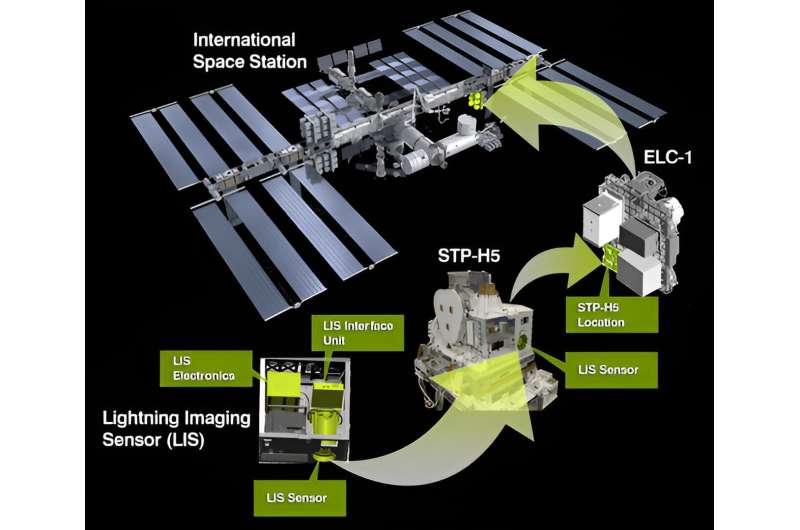This article has been reviewed according to Science X's editorial process and policies. Editors have highlighted the following attributes while ensuring the content's credibility:
fact-checked
trusted source
proofread
Employing optical lightning data to identify gamma-ray flashes from thunderstorms

Timothy Lang is a co-author on an article titled "Employing Optical Lightning Data to identify lightning flashes associated to Terrestrial Gamma-ray Flashes," which was published in the Bulletin of Atmospheric Science and Technology.
Rich Blakeslee, formerly of the NASA MSFC Emeritus program, is also a co-author on the study. The study—which was led by Christoph Köhn of the Technical University of Denmark (DTU)—used data from the International Space Station Lightning Imaging Sensor (ISS LIS) and the Atmosphere-Space Interactions Monitor (ASIM; also on the ISS) to improve our understanding of what types of lightning flashes are associated with terrestrial gamma-ray flashes (TGFs), which emit high-energy radiation from thunderstorms.
The team developed an algorithm that accurately reduced the total population of LIS-observed lightning to a much smaller population of candidate TGF-related flashes by looking for unique characteristics within the flashes. ASIM, which can observe TGFs, was used to validate the algorithm.
This study is important because instruments like ASIM only observe 300–400 TGFs per year, while LIS observed on average ~1 million lightning flashes per year. This difference of four orders of magnitude in frequency of occurrence means that data-reduction algorithms are necessary to facilitate studying the relationships between TGFs and lightning.
In addition, a recent NASA field campaign demonstrated that TGF occurrence may be significantly higher than what can be measured from space, particularly within tropical thunderstorms.
Thus, an algorithm that identifies possible characteristics TGF-related lightning may help us later in understanding differences between lightning associated with strong TGFs (observable from space) and lightning associated with weaker TGFs (not currently observable from space).
More information: Christoph Köhn et al, Employing optical lightning data to identify lightning flashes associated to terrestrial gamma-ray flashes, Bulletin of Atmospheric Science and Technology (2024). DOI: 10.1007/s42865-024-00065-y
Provided by NASA


















